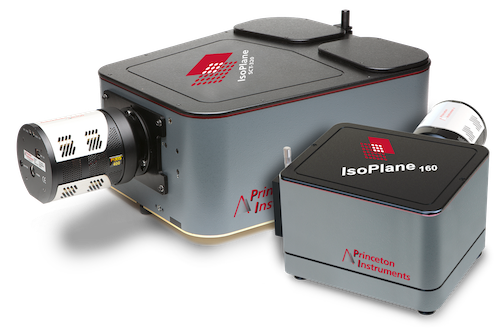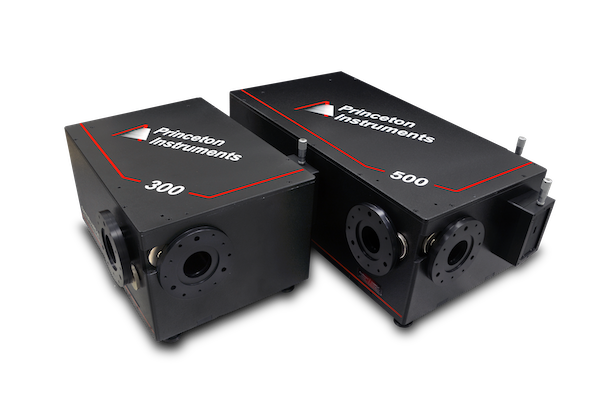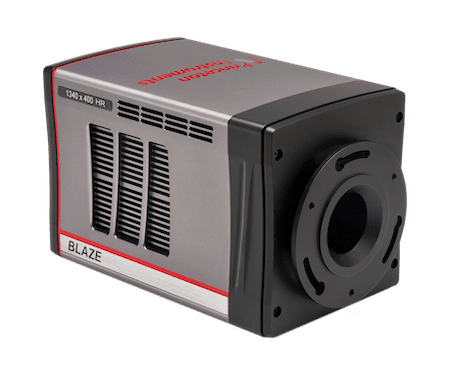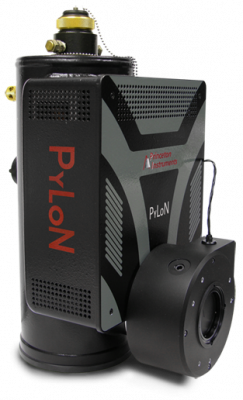Fluorescence, Phosphorescence and Photoluminescence Spectroscopy
Fluorescence, phosphorescence, and photoluminescence occur when a sample is excited by absorbing photons and then these photons are emitted with a characteristic decay time. Fluorescence is when the absorbing and emitting species is an atom or molecule. Phosphorescence is similar to fluorescence but with a longer time gap between absorption and emission. Photoluminescence is the term physicists use to describe the absorption and emission of light by materials such as semiconductor and nanotubes.
A chemical species absorbs a photon and is excited to a singlet electronic state. It then relaxes via non-radiative mechanisms and emits a lower-energy photon. This allows it to transition to the ground electronic state. A spectrograph and camera can be used to obtain the spectrum of emission, with the intensity correlating to the concentration of the chemical species.

Spectrometers for Fluorescence Decay

IsoPlane Family
The IsoPlane family offers excellent signal-to-noise ratio, with high spectral resolution and imaging performance to ensure almost perfect capture of information from fluorescence decay.
The IsoPlane family provides twice the light-gathering power of a typical Czerny-Turner spectrograph, necessary for the lowest light fluorescence emission. This produces sharper images and improved resolution, ensuring all peaks within the resulting spectra are distinguished without the need for post-processing techniques.
With a unique optical design, the IsoPlane family completely eliminates astigmatism across the focal plane. This offers multichannel capabilities to obtain broad range spectral information. As fluorescence decay spectroscopy is an analytical technique, a broad range is essential to determine the chemical composition of samples.
SpectraPro HRS
The SpectraPro HRS is the standard for reliable high-performance spectroscopy, ensuring high spectral resolution, as well as an astigmatism-corrected design for repeatable quantitative chemical analysis.
The SpectraPro HRS is also equipped with spectral deconvolution (ResXtremeTM) and a grating drive system (AccuDriveTM) for increased spectral resolution, highly important for separating any close decay peaks.
The SpectraPro increases signal to noise ratio up to 60% with up to a three times improvement in wavelength accuracy in comparison to a typical Czerny-Turner spectrograph. The SpectraPro can provide accurate and reliable spectra for all low-light fluorescence decay spectroscopy.

Cameras for Fluorescence Decay

ProEM
The ProEM series features eXcelon™3 coated back-illuminated EMCCD sensors which offer higher NIR and UV quantum efficiency alongside reduced etaloning (fringing) providing improved spectral quality for low-light fluorescence decay scattering within the UV and NIR range.
Fluorescence decay spectroscopy is a compositional analytical technique so requires highly sensitive cameras to obtain compositional sample information. The ProEM EMCCD camera is highly sensitive and thermoelectrically cooled for low noise, providing the sensitivity essential for capturing compositional information.
The ProEM allows long exposure imaging due to ultra-low dark current, essential for continual measurement of fluorescence decay.
BLAZE
For fluorescence decay spectroscopy within the 900-1700 nm wavelength range, the BLAZE spectroscopy camera offers high NIR sensitivity and low dark current.
The BLAZE delivers fast spectral rates to capture high throughput spectral information alongside True -100℃ cooling. This level of deep cooling provides low spectral noise, ideal for low light applications and long exposure times – two characteristics of fluorescence decay spectroscopy.


PyLoN
The PyLoN is a cryogenically cooled CCD offering extremely low noise essential for the high resolution required for fluorescence decay spectroscopy. As low noise is essential, it requires a CCD with low dark current levels and reduced read noise – as provided by the PyLoN.
The PyLoN also provides flexible readout speeds from 50 kHz – 4 MHz, enabling both high spectral speeds (<6600 spectra/sec) or low read noise dependent on the specific fluorescent sample.
